History
Clydebank is the home of John Brown's shipyard, the most famous of Glasgow's shipyards and the birthplace of such iconic ships as the RMS Lusitania, the Royal Yacht Britannia and the QE2.
The shipyard was originally founded by Glaswegian brothers James and George Thomson in 1871, who had already been operating in Cessnock for twenty years[1]. It gained a worldwide reputation for quality and innovation, but in 1897 the family sold it to a consortium called the Clydebank Engineering and Shipbuilding Co. In 1899 it was acquired by John Brown & Co. - originally a Sheffield steel foundry and engineering works.
The next sixty years were the heyday of the Clydeside shipbuilding industry. John Brown's shipyard produced battlecruisers for the Royal Navy and cruise ships for the Cunard Line. The RMS Lusitania was the largest ship ever made when launched in 1906, and required the shipyard to be rebuilt in order for the vessel to fit diagonally in the Clyde.
After surviving the Clydebank Blitz of March 1941, the shipyard began to struggle in the late 1950s in the face of increased competition from elsewhere in Europe and the far East. The last major contract was for the RMS Queen Elizabeth II (the QE2), launched in September 1967. Shipbuilding ended in 1973 and the site finally closed entirely in 2000. It has been wasteground ever since.
Read more on James and George Thomson and John Brown and Company.
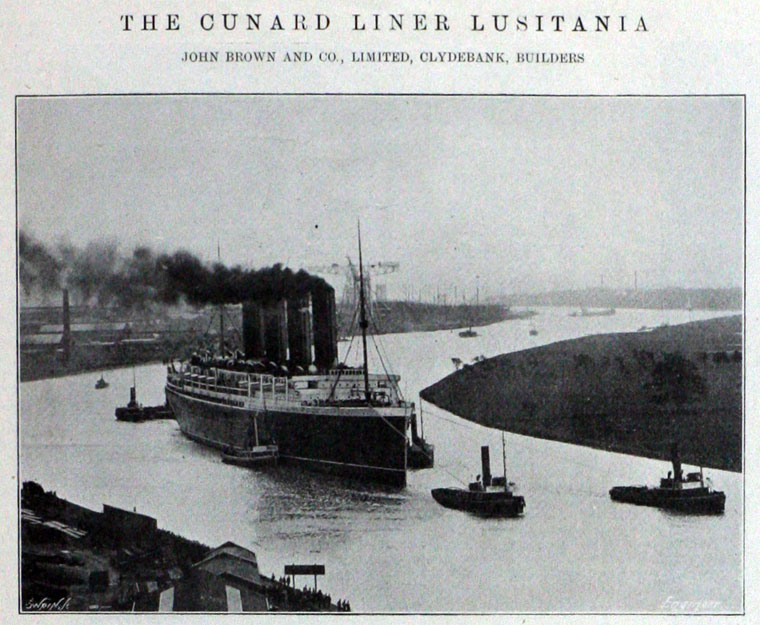
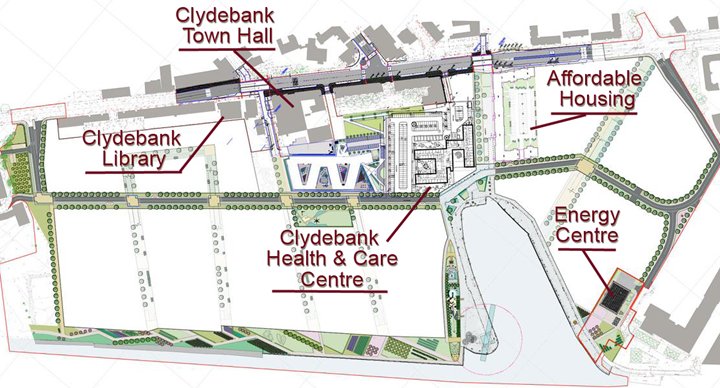
Annotated site masterplan (as at February 2019)
Residential dwellings
The site is expected to include over 1,000 private homes, including around 150 affordable units. The original masterplan envisages that these will range from top-end waterfront flats to townhouses along newly created streets to affordable units located close to the commercial districts. The council intends to require the affordable housing on site to conform to the 'silver' or 'gold' sustainability standards[4].

'Mews-style' affordable housing at Queens Quay. Visualisation from West Dunbartonshire Council
Civic facilities
Plans have already been submitted for an NHS health centre and care home on the site, located centrally, adjacent to the existing Clydebank Town Hall. There are also to be 'pocket parks' and a strip of green space along the riverfront[5].
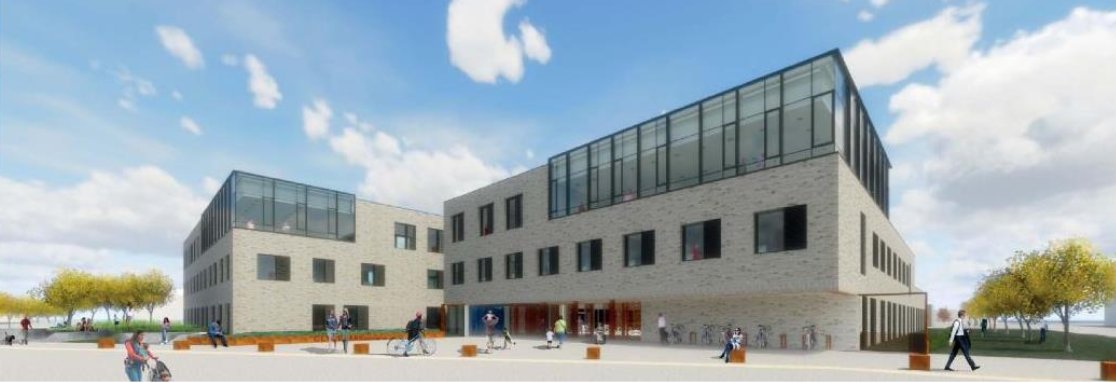
The proposed health and care centre at Queens Quay. Visualisation from West Dunbartonshire Council
District heating
Perhaps the most interesting part of the plan from an engineering perspective is its district heating system. The £12m cost of the project has received 50% of its funding from the Scottish Government's Low Carbon Infrastructure Transition Programme[6]. The network will be designed and installed by Glasgow-based Vital Energi.
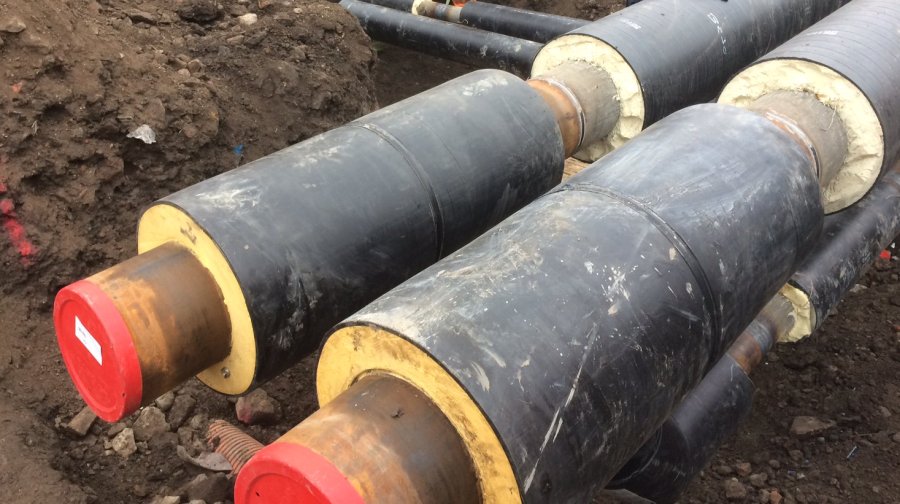
District heating pipes being installed at Queens Quay (picture: @Queens_quay)
Energy Centre
Planning permission for an energy centre to form the hub of the district heating system was received in December 2017. The building will house two 2.5MWth water sourced heat pumps drawing heat from the River Clyde, supported with conventional gas boilers. The heat pumps are to be supplied by Glasgow-based Star Refrigeration.
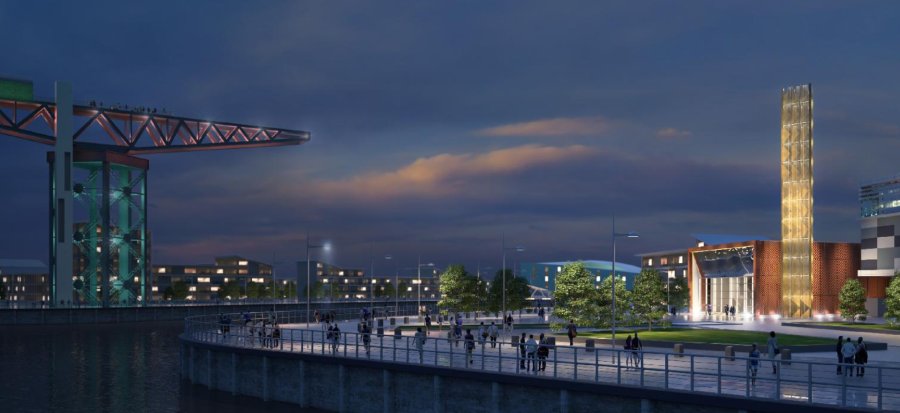
The Energy Centre is conceived as a new landmark for the development, responding to the iconic industrial design of the Titan Crane. (Visualisation by ADF Architects)